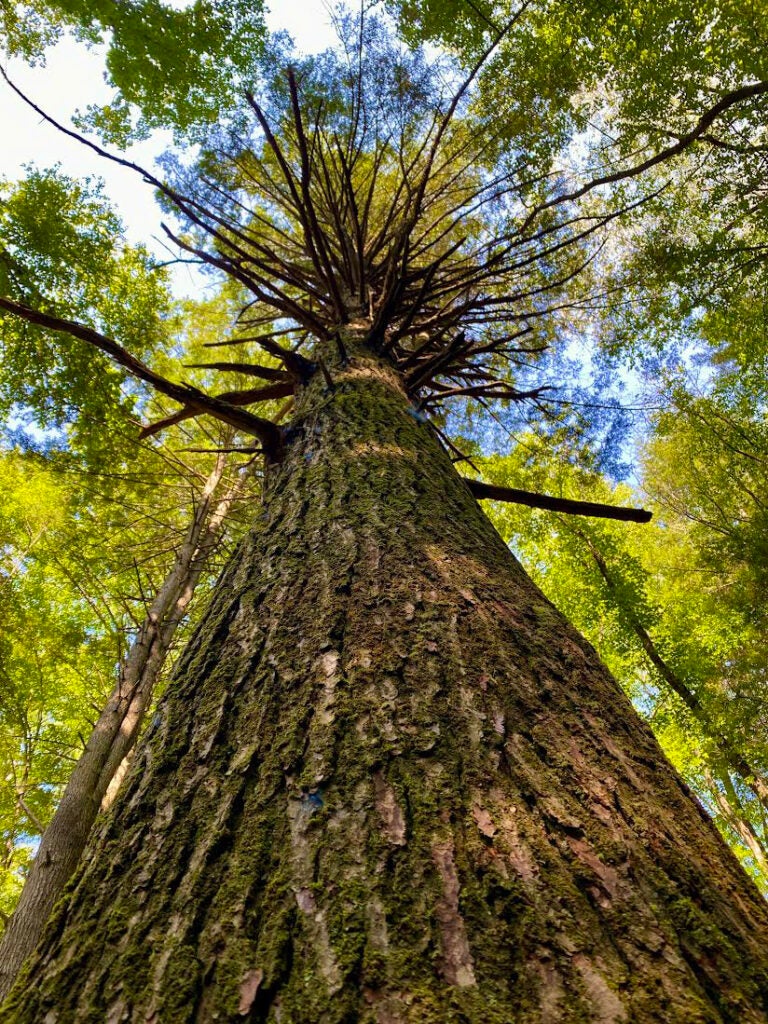Tree trunks: The dead support the living
Published 10:52 am Thursday, December 7, 2023

- Trunks of big trees have a majesty all their own. Photo by Steve Roark
|
Getting your Trinity Audio player ready...
|
By Steve Roark
Cumberland Gap National Historical Park
Trees are impressive life forms, producing tall, majestic columns that reach to the sky. Besides support, tree trunks perform a number of functions, so here’s a lesson in tree physiology.
Growth of the trunk occurs at a thin layer of cells called the cambium. Here and only here does active cell division occur. The cambium is located near the outer portion of the trunk and can be damaged by fire or wounds made by tools or equipment. It grows two kinds of wood cells; one type grows towards the tree center, the other outward. The inward growing cells are called xyloem (pronounced zi-lum) and form a plumbing system that transports water and nutrients from the roots (which obtain them from the soil) up the tree to the branches. As new xyloem layers form, the older xyloem cells gradually cease to function and die. Layer by layer they form heartwood and provide support of the massive tree structure. The cells also provide a place to store toxins the tree may accumulate, acting as a landfill for unwanted material. This is what gives heartwood its dark color. Remember, heartwood is non-living cells, and in older trees can form 50 to 90% of the trunk.
OK, back to the cambium layer. The cells produced towards the outside of the tree are called phloem cells (pronounced flo-um). These also provide a pipeline only in the opposite direction. Phloem transports sugars (think food) suspended in sap down from the leaves where it was made to feed the rest of the tree. As the older phloem layers move away from the cambium as new layers are added, the outer layers begin to die. The dead phloem cells gradually form the bark, which is the protective skin of the tree.
So there you have it, the innermost portion of the tree is clinically dead, as is the outer bark layers. And yet these dead portions still serve the living by providing protection and skeletal strength. A magnificent piece of creation engineering.
Steve Roark is a volunteer at Cumberland Gap National Historical Park.






